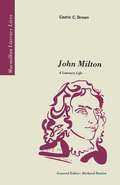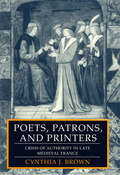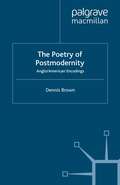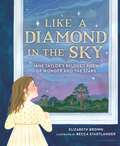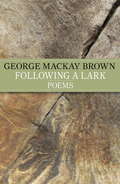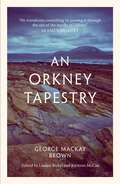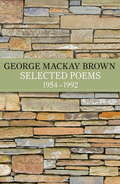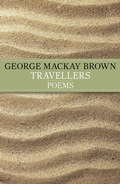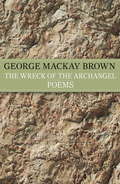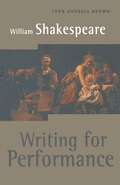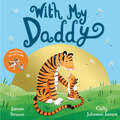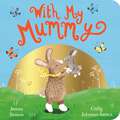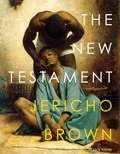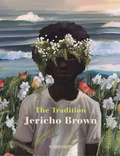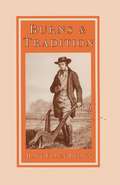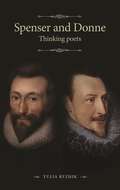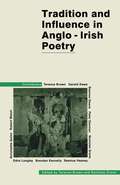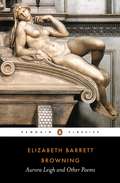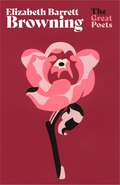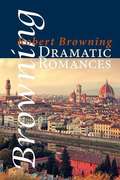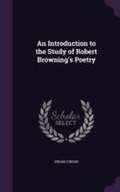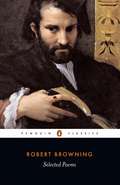- Table View
- List View
John Milton: A Literary Life (Literary Lives)
by Cedric C. BrownFor the first time in an approachable, affordable volume this study treats the whole literary career of England's most distinguished protestant-republican poet and writer, considering the miscellaneous output in the light of contexts and political functions. It highlights self-presentational and persuasive characteristics, pays attention to the sense of vocation and also describes Milton's distinctive achievement in social genres. Milton's competitive humanist training is seen to accomodate uneasily to the specific demands of some public works. The book features unfamiliar texts, whilst canonical texts are set in the story of his long endeavours during a turbulent period in English history.
Poets, Patrons, and Printers: Crisis of Authority in Late Medieval France
by Cynthia J. BrownCynthia J. Brown explains why the advent of print in the late medieval period brought about changes in relationships among poets, patrons, and printers which led to a new conception of authorship.Examining such paratextual elements of manuscripts as title pages, colophons, and illustrations as well as such literary strategies as experimentation with narrative voice, Brown traces authors' attempts to underscore their narrative presence in their works and to displace patrons from their role as sponsors and protectors of the book. Her accounts of the struggles of poets, including Jean Lemaire, Jean Bouchet, Jean Molinet, and Pierre Gringore, over the design, printing, and sale of their books demonstrate how authors secured the status of literary proprietor during the transition from the culture of script and courtly patronage to that of print capitalism.
The Poetry of Postmodernity: Anglo/American Encodings
by D. BrownThe Poetry of Postmodernity reappraises key Anglo/American poets of the last fifty years in the light of debates about the postmodern situation. It offers fresh critical insights into how their literary contribution gives cogent expression to both the socio-cultural possibilities and the global problems of our recent past, our apparent present and our probable future. The poets considered are late Auden, Ginsberg, Plath, Berryman, Hughes, Hill, Ashbery and late R.S. Thomas.
Like a Diamond in the Sky: Jane Taylor’s Beloved Poem of Wonder and the Stars
by Elizabeth BrownThe story behind the classic and universally recognized rhyme! This luminous picture book biography shines a light on the little-known poet and author of the beloved lullaby.Twinkle, twinkle, little star, how I wonder what you are. Did you ever wonder who wrote that famous verse?In the days when most girls were brought up to run a home, Jane Taylor had a different kind of education in the English countryside, where she was inspired by nature and the stars, and dreamed of becoming a writer. But in the late 1700s, it was not considered proper for women to be writers. Jane and other female poets were shunned, unable to use their own names when published.But Jane did write, and she never forgot her love for the beauty of nature and the glow of stars, or her desire to write for children. Her published poetry became universally known for generations to come: Twinkle, twinkle little star.This lyrical and luminous biography shines a light on the unsung poet who wrote the words of our most enduring lullaby, and features stunning artwork reflecting the world, the stars, and the story behind the poem that we all know so well.
Like a Diamond in the Sky: Jane Taylor’s Beloved Poem of Wonder and the Stars
by Elizabeth BrownThe story behind the classic and universally recognized rhyme! This luminous picture book biography shines a light on the little-known poet and author of the beloved lullaby.Twinkle, twinkle, little star, how I wonder what you are. Did you ever wonder who wrote that famous verse?In the days when most girls were brought up to run a home, Jane Taylor had a different kind of education in the English countryside, where she was inspired by nature and the stars, and dreamed of becoming a writer. But in the late 1700s, it was not considered proper for women to be writers. Jane and other female poets were shunned, unable to use their own names when published.But Jane did write, and she never forgot her love for the beauty of nature and the glow of stars, or her desire to write for children. Her published poetry became universally known for generations to come: Twinkle, twinkle little star.This lyrical and luminous biography shines a light on the unsung poet who wrote the words of our most enduring lullaby, and features stunning artwork reflecting the world, the stars, and the story behind the poem that we all know so well.
Following A Lark
by George Mackay BrownA country boy creeps unwillingly to school on a lark-filled summer morning. Norse crusaders, preparing to sail on Earl Rognvald's crusade in 1151 break into the burial chamber at Maeshowe seeking treasure, and cut runes in its massive stones. And the famous Iceland poet Thorbjorn leaves his farm to join the group of poets whose lyrics stud like gems that famous pilgrimage. The ancient northern ceremonies of solstice and equinox, Easter and Yule, are brought to vivid life in the poems collected in this book, and so also are some of the holidays of the Christian calender. The cycle of seasons is more noticeable in the north, especially perhaps winter, the time of story-telling and music. There are tributes to the great poet of winter, Robert Burns, and a celebration of the Irish veteran of the Peninsular War who founded a tavern in Orkney in 1821. The life of an islander is 'sweetly compacted' in The Laird and the Three Women.
An Orkney Tapestry
by George Mackay BrownFirst published in 1969, An Orkney Tapestry, George Mackay Brown's seminal work, is a unique look at Orkney through the eye of a poet. Originally commissioned by his publisher as an introduction to the Orkney Islands, Brown approached the writing from a unique perspective and went on to produce a rich fusion of ballad, folk tale, short story, drama and environmental writing. The book, written at an early stage in the author’s career, explores themes that appear in his later work and was a landmark in Brown’s development as a writer. Above all, it is a celebration of Orkney's people, language and history. This edition reproduces Sylvia Wishart’s beautiful illustrations, commissioned for the original hardback.Made available again for the first time in over 40 years, this new edition sits alongside Nan Shepherd’s The Living Mountain as an important precursor of environmental writing by the likes of Kathleen Jamie, Robert Macfarlane, Malachy Tallack and, most recently, Amy Liptrot.
Selected Poems 1954 - 1992
by George Mackay BrownA compilation of poetry written by George Mackay Brown over a 30-year period, which represents his favourite work. These poems reflect the richness of the Orkney Island community where he lives - a community permeated with its past and still close to the natural world.
Travellers
by George Mackay BrownThese unknown and sometimes unexpected poems by the Orcadian master have all his characteristic simplicity and power.In these poems readers will find new ideas previously unexplored, but they will also find those qualities that made George Mackay Brown different from anyone else.
The Wreck of the Archangel
by George Mackay BrownThis collection of the poetry of George Mackay Brown centres on the theme of journeys - including an ill-fated 19th century trip ending off the Orkney island of Westray, from which the book takes its title.
William Shakespeare
by J. BrownWritten for performance, Shakespeare's plays are very different texts from any intended for a reader with book in hand and they require a different kind of attention. John Russell Brown's latest book attempts a description of Shakespeare's distinctive practice as a writer for the stage and, in doing so, suggests ways of responding to the plays which bring them alive in the mind as if in performance. It is a book for use, to quicken both eye and ear while reading the texts and to enliven almost any critical debate.
With My Daddy
by James BrownDays with my daddy are always such fun,and ever so special together, as one.From breakfast at the zoo to bathtime by the sea, every moment of the day with Daddy is an adventure.With father lion cooking tea, daddy dog dancing, and papa penguin reading books, this is a touching celebration of the special relationship between father and child. Warmly told in gentle rhyme by James Brown and brought to life with charming illustrations by Cally Johnson-Isaacs. With My Daddy is a heartwarming animal picture book and the perfect gift to share time and time again.More fun adventures can be found in With My Mummy.
With My Mummy
by James BrownDays with my mummy are always such fun,and ever so special together, as one.From playing in the park to cuddles at bedtime, being with Mummy makes every moment of every day special.A touching celebration of the special relationship between mother and child. Warmly told in gentle rhyme by James Brown and brought to life with charming illustrations by Cally Johnson-Isaacs. With My Mummy is a heartwarming picture book and the perfect gift to share time and time again.Companion title, With My Daddy, also available.
The New Testament
by Jericho Brown‘To read Jericho Brown’s poems is to encounter devastating genius’ Claudia RankineJericho Brown’s The New Testament is a devastating meditation on race, sexuality and contemporary American society by one of the most important new voices in US poetry. In poems of immense clarity, lyricism and skill, Brown shows us a world where disease runs through the body, violence runs through the neighbourhood, and trauma runs through generations. Here Brown makes brilliant and subversive use of Bible stories to address the gay experience from both a personal and a political perspective. By refusing to sacrifice nuance, no matter how charged and urgent his subject, Brown is one of the handful of contemporary poets who have found a speech adequate to the complex times in which we live, and a way to express an equivocal hope for the future. The New Testament was winner of the Thom Gunn Award for Gay Poetry and the Paterson Award for Literary Excellence, 2015.
The Tradition
by Jericho BrownA Poetry Book Society Choice'To read Jericho Brown's poems is to encounter devastating genius.' Claudia RankineJericho Brown’s daring poetry collection The Tradition details the normalization of evil and its history at the intersection of the past and the personal. Brown’s poetic concerns are both broad and intimate, and at their very core a distillation of the incredibly human: What is safety? Who is this nation? Where does freedom truly lie? Poems of fatherhood, legacy, blackness, queerness, worship, and trauma are propelled into stunning clarity by Brown’s mastery, and his invention of the duplex – a combination of the sonnet, the ghazal, and the blues – testament to his formal skill. The Tradition is a cutting and necessary collection, relentless in its quest for survival while revelling in a celebration of contradiction.
The New Poet: Novelty and Tradition in Spenser’s Complaints (Liverpool English Texts and Studies #32)
by Richard BrownThis gracefully written and well thought-out study deals with a neglected collection of poems by Spenser, which was issued in 1591 at the height of his career. While there has been a good deal written in recent years on two of the poems in the collection, ‘Mother Hubberd’s Tale’ and ‘Muiopotmos’, Brown innovatively addresses the collection in its entirety. He urges us to see it as a planned whole with a consistent design on the reader: he fully acknowledges, and even brings out further, the heterogeneity of the collection, but he examines it nevertheless as a sustained reflection on the nature of poetry and the auspices for writing in a modern world, distancing itself from the traditions of the immediate past. The strength of this work lies both in the originality of its project and in the precision and enterprise of the close reading that informs its argument. Interest in the concern of Spenser’s poetry with the nature of poetry is in the current critical mainstream, but here the attentiveness is both unusually focused and unusually sustained. Brown garners more than would be expected from the translations in the Complaints, while at the same time including striking and individual chapters on the better known ‘Mother Hubberd’s Tale’ and ‘Muiopotmos’; he advances understanding of these extremely subtle texts and fully justifies his wider approach to the collection as a whole. Arguing that Spenser’s relationship to literary tradition is more complex than is often thought, Brown suggests that Spenser was a self-conscious innovator whose gradual move away from traditional poetics is exhibited by the different texts in the Complaints. He further suggests that the Complaints are a ‘poetics in practice’, which progress from traditional ideas of poetry to a new poetry that emerges through Spenser’s transformation of traditional complaint.
Spenser and Donne: Thinking poets
by Richard Danson Brown Christopher Dean Johnson Niranjan Goswami Kathryn Walls Patrick Cheney Anne Lake Prescott Elizabeth Harvey Ramie Targoff Linda Gregerson Ayesha Ramachandran David Marno Jane Grogan Anne FogartyThe names Edmund Spenser and John Donne are typically associated with different ages in English poetry, the former with the sixteenth century and the Elizabethan Golden Age, the latter with the ‘metaphysical’ poets of the seventeenth century. This collection of essays, part of The Manchester Spenser series, brings together leading Spenser and Donne scholars to challenge this dichotomous view and to engage critically with both poets, not only at the sites of direct allusion, imitation, or parody, but also in terms of common preoccupations and continuities of thought, informed by the literary and historical contexts of the politically and intellectually turbulent turn of the century. Juxtaposing these two poets, so apparently unlike one another, for comparison rather than contrast changes our understanding of each poet individually and moves towards a more holistic, relational view of their poetics.
Tradition and Influence in Anglo-Irish Poetry
by Terence Brown Nicholas GreneA collection of essays presenting an "insider" view of the Irish poetic tradition. It brings together some of the best-known poets and critics writing in Ireland today, exploring the multiple traditions and influences within Anglo-Irish poetry from the 19th century to the present.
Aurora Leigh and Other Poems
by Elizabeth BrowningAurora Leigh (1856), Elizabeth Barrett Browning's epic novel in blank verse, tells the story of the making of a woman poet, exploring 'the woman question', art and its relation to politics and social oppression. The texts in this selection are based in the main on the earliest printed versions of the poems. What Edgar Allan Poe called 'her wild and magnificent genius' is abundantly in evidence. In addition to Aurora Leigh, this volume contains poetry from the several volumes of Elizabeth Barrett Browning's published poetry from 1826 to 1862, including Casa Guidi Windows (1851), Songs for the Ragged Schools of London (1854) and the British Library manuscript text of the 'Sonnets from the Portuguese' (1846) which records her courtship with Robert Browning.
Elizabeth Barrett Browning: Much-loved poems from one of the greatest Romantic poets (The Great Poets)
by Elizabeth Barrett Browning'How do I love thee? Let me count the ways'Elizabeth Barrett Browning was a poet of passion, wit and conscience. She was also a woman who wrote to speak the truth about everything she knew - and she knew just what it was like to be a thinking woman in a society that wanted women to be weak. The eldest of twelve children, she wrote poetry from the age of eleven, and became a highly successful poet in her lifetime - and remains very much loved today.She was also a strong advocate for human rights, campaigning to abolish slavery and child labour, and her three-part poem A Curse for a Nation is a powerful polemic against the slave trade.'I heard an angel speak last night, and he said "write! Write a nation's curse for me, and send it over the western sea" '
Dramatic Romances
by Robert BrowningDramatic Romances and Lyrics is a collection of English poems by Robert Browning, first published in 1845 as the seventh volume in a series of self-published books entitled Bells and Pomegranates
Selected Poems: Prescribed For The Junior Matriculation And Junior Leaving Examinations 1908
by Robert Browning Daniel KarlinRobert Browning was one of the greatest of English poets, whose intense and original imagination enabled him to transform any subject he chose - whether everyday or sublime - into startling memorable verse. In his work he brought to life the personalities of a diverse range of characters, and introduced a new immediacy, colloquial energy and psychological complexity to the poetry of his day. This selection brings together verse ranging from early dramatic monologues such as the chilling 'My Last Duchess' and the ribald 'Fra Lippo Lippi', which show his gift for inhabiting the mind of another, to the popular children's poem 'The Pied Piper of Hamelin' and many lesser known works. All display his innovative techniques of diction, rhythm and symbol, which transformed Victorian poetry and influenced major poets of the twentieth century such as Ezra Pound, T. S. Eliot and Robert Frost.
